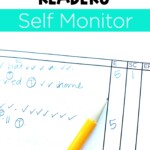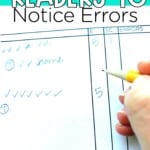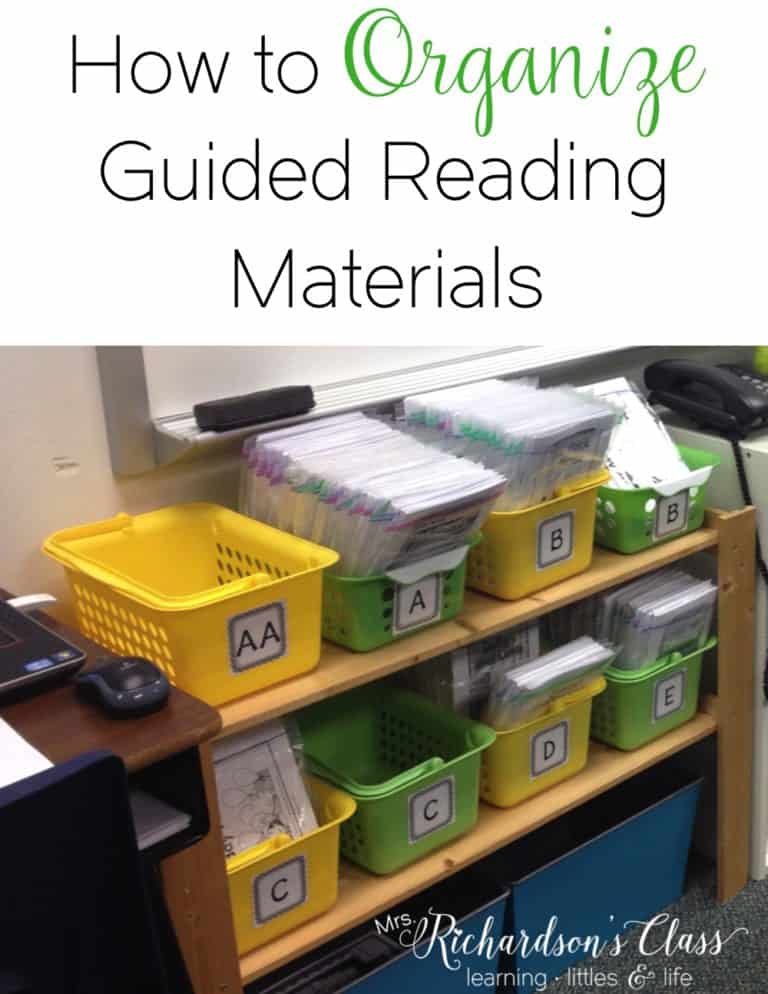


One of the trickiest things for young readers to learn is to self-monitor and notice their own reading errors. It’s hard for readers to master and coordinate all of the pieces of reading like concepts about print, phonics, reading strategies, sight words, and self-monitoring. So what do we do to help coach readers to notice their errors?
There are a few things we can do:
When students don’t notice reading errors, they are not self-monitoring well. When they aren’t self-monitoring well, they may struggle with reading comprehension, too. Comprehension is the goal of reading because like I say often if kids aren’t understanding what they are reading, they are simple word calling. Let’s jump into a few ways we can support the readers in our classroom and help them develop a love for reading for enjoyment and to learn.
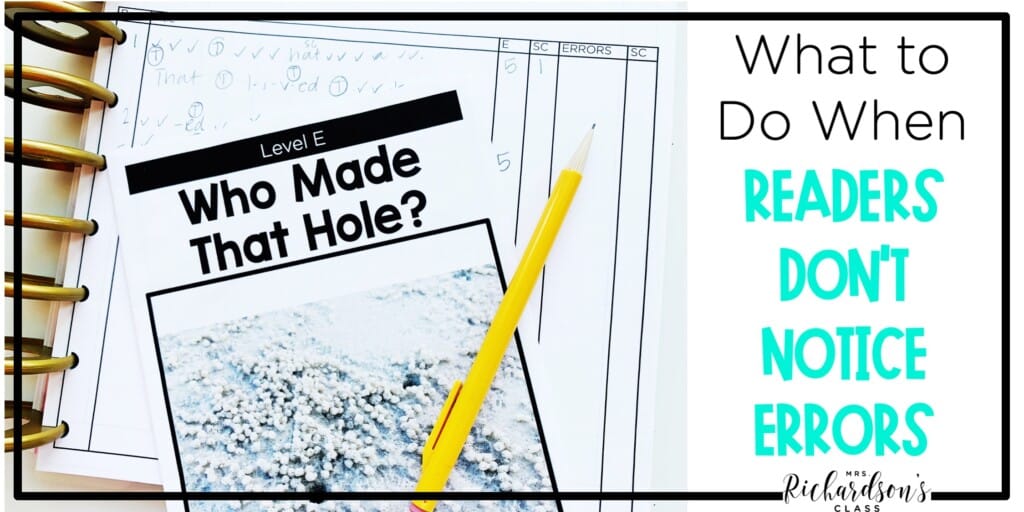
Even though you may want to quickly jump in when students don’t notice a reading mistake, let your reader finish the sentence or page and see what happens. The reader may realize they made a mistake once they get to the end of the sentence and think about it. Maybe they get to the end of a page and think, “Hey, that doesn’t quite make sense.” Give them the opportunity to self-correct before you jump in.
To help get young readers to think about the text, you can help guide them through intentional questioning. Let’s give them the tools they need to learn how to figure it out on their own.
When the student doesn’t notice a reading mistake, ask them if the sentence they just read makes sense. This gives them the opportunity to recall what they said and see if it fits into the text. You are asking them to pause and reflect.
Then you can ask them to start with the letters and make every sound in the word.
We want them to FIRST attend to the text. We want visual to be the first cueing system they use. We want them to sound it out. We want them to decode the word the best that they can. Then, we want them to use meaning and syntax to cross-check.
Next, ask the student to reread the sentence (or page if it’s short) aloud and see if they notice the reading error this time. If they do, you can help them problem-solve to read the word. If not, dive into more questions to help them notice the mistake.
For example, if the text says “The dog jumped into the pool.” and the reader substitutes “pond” for “pool”, you might ask them to read all the way through the word to find the last sound they hear. They may sound it out, cross-check, go back to the word and sound it out, then cross-check again before they land on a word that is correct.
If the student doesn’t notice the reading errors, even after prompting, point it out to them. Then you can guide them toward solving the word. Have the reader reread the sentence again using the correct word to build comprehension.
If the reader is having reading errors and not noticing, but you think prompting them would disrupt reading comprehension, you may want to quickly point out the error and have them reread the sentence. This could be an uncommon name or place that will show up in the text multiple times.
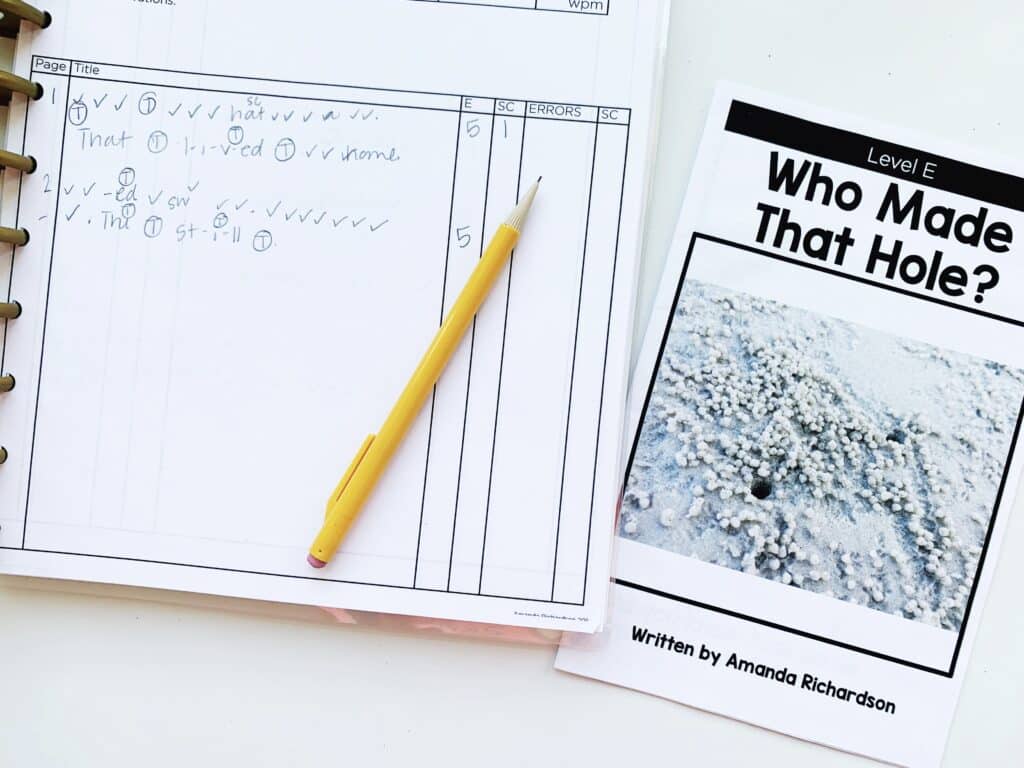
I want to leave you with a few practical tips to help students monitor for reading errors while reading so that they can read more fluently and comprehend what they read.
Guiding students to self-monitor and notice their own reading errors takes time and practice. Remember to try out different strategies for each reader to see how they respond to the different options.
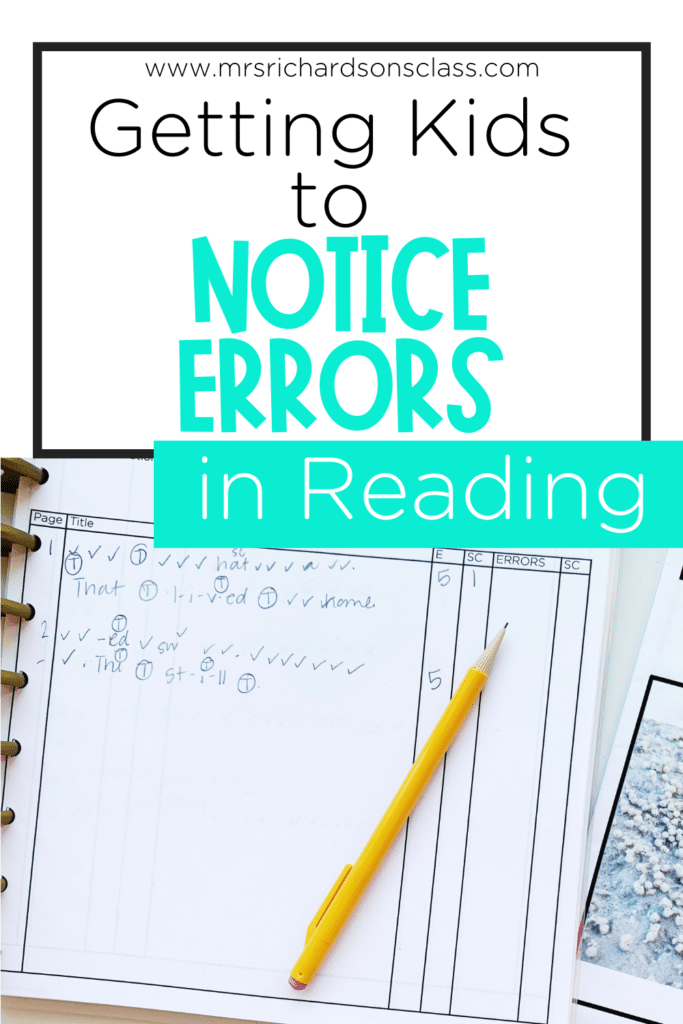
I think the biggest thing to remember is to make reading fun! We ultimately want our readers to feel confident and smart as they are learning to read and eventually reading to learn!
If you want to learn more about how to help your readers and implement guided reading, hop on my waitlist for Rethinking Guided Reading It’s the ultimate, all-inclusive professional development course that teaches you how to master reading instruction.

Want to use the latest research to boost your readers during small groups? This FREE guide is packed with engaging ideas to help them grow!

I’m a K-1 teacher who is passionate about making lessons your students love and that are easy to implement for teachers. Helping teachers like you navigate their way through their literacy block brings me great joy. I am a lifelong learner who loves staying on top of current literacy learning and practices. Here, you’ll find the tools you need to move your K-2 students forward!


| Cookie | Duration | Description |
|---|---|---|
| cookielawinfo-checkbox-analytics | 11 months | This cookie is set by GDPR Cookie Consent plugin. The cookie is used to store the user consent for the cookies in the category "Analytics". |
| cookielawinfo-checkbox-functional | 11 months | The cookie is set by GDPR cookie consent to record the user consent for the cookies in the category "Functional". |
| cookielawinfo-checkbox-necessary | 11 months | This cookie is set by GDPR Cookie Consent plugin. The cookies is used to store the user consent for the cookies in the category "Necessary". |
| cookielawinfo-checkbox-others | 11 months | This cookie is set by GDPR Cookie Consent plugin. The cookie is used to store the user consent for the cookies in the category "Other. |
| cookielawinfo-checkbox-performance | 11 months | This cookie is set by GDPR Cookie Consent plugin. The cookie is used to store the user consent for the cookies in the category "Performance". |
| viewed_cookie_policy | 11 months | The cookie is set by the GDPR Cookie Consent plugin and is used to store whether or not user has consented to the use of cookies. It does not store any personal data. |


